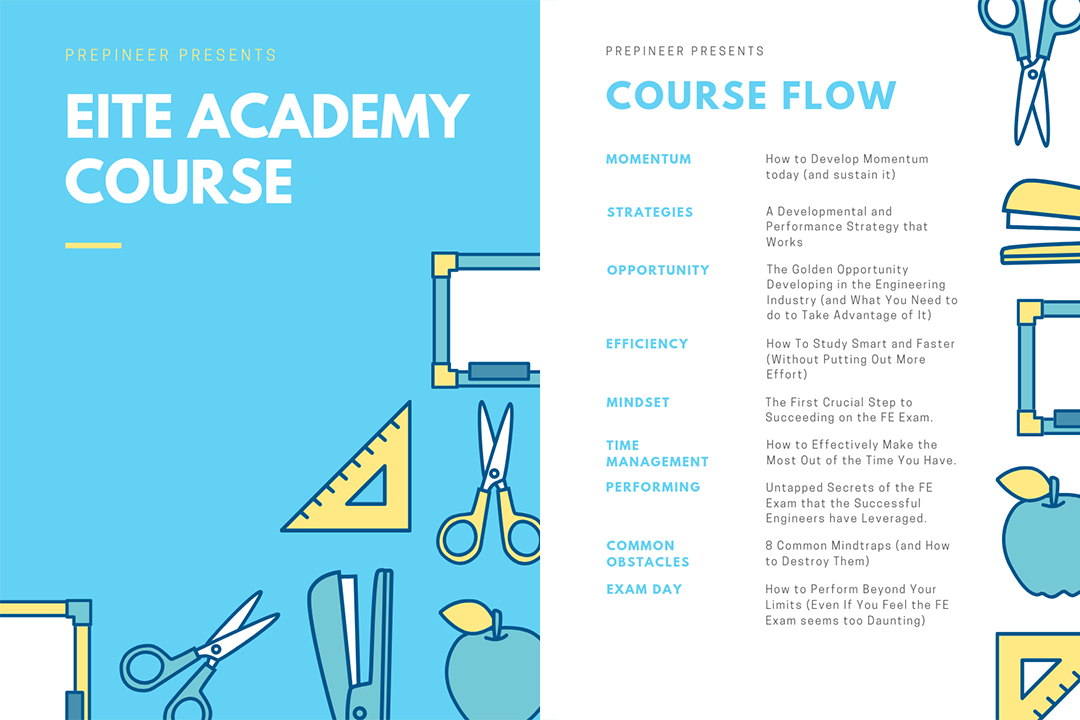The Engineer in Training exam is an 8 hour exam taken during a 1 day period at a specified testing facility within your State. You can see where each exam site is by visiting your State Board website; find your State’s Information here.
The test is 180 multiple choice questions in length and is broken up in to two 4 hour sessions, a morning and an afternoon. During the morning session, the examinee answers 120 multiple choice questions, each question worth one point, covering a broad range of engineering topics, extending from general Mathematics and Calculus to Engineering Dynamics and Fluid Mechanics. During the morning session, all examinees sitting for the exam are tested on the same general engineering topics regardless of their undergraduate engineering background; this session is designed to verify the engineer’s overall knowledge of the core engineering disciplines as a whole. Each examinee can acquire 120 total points during this session of the test.
In the afternoon session, another 60 multiple choice questions are answered, each worth two points, covering a specific discipline usually chosen by the examinee prior to the exam; typically one in line with their undergraduate engineering background. There are seven subject areas to choose from: General, Chemical, Civil, Electrical, Environmental, Mechanical, or Industrial Engineering. Most States require this discipline to be chosen prior to the exam, during the application process, but others allow the candidates to identify and choose the subject area during the examination. The discipline on the Engineer in Training exam you choose to take does not effect or determine the branch of engineering in which you are eligible to apply for when you go to pursue your professional licensure, so choose the one you feel most comfortable with regardless of your planned career path.
The questions on the PM portion of the EIT exam are tailored to hone in on the specified discipline and are completely stand alone from those on the AM portion. This session is designed to verify the engineer’s in depth knowledge of their dedicated engineering discipline. Each examinee can acquire 120 total points during this session of the test, for a total 240 points possible for the exam as a whole.
AM Session (Breadth portion covering 12 subject areas)
The 12 subjects areas that follow, outline and further define what to expect when you take the AM portion of the Engineer in Training Exam. Each subject area is broken down in to the subtopics that should be focused on when studying for the exam.
The percentage next to the subject is approximately how much of the total content of the AM session that particular subject makes up. This breakdown is as outlined by NCEES on their website.
I. Mathematics (15%)
A. Analytic geometry
B. Integral calculus
C. Matrix operations
D. Roots of equations
E. Vector analysis
F. Differential equations
G. Differential calculus
II. Engineering Probability and Statistics (7%)
A. Measures of central tendencies and dispersions (e.g., mean, mode, standard
deviation)
B. Probability distributions (e.g., discrete, continuous, normal, binomial)
C. Conditional probabilities
D. Estimation (e.g., point, confidence intervals) for a single mean
E. Regression and curve fitting
F. Expected value (weighted average) in decision-making
G. Hypothesis testing
III. Chemistry (9%)
A. Nomenclature
B. Oxidation and reduction
C. Periodic table
D. States of matter
E. Acids and bases
F. Equations (e.g., stoichiometry)
G. Equilibrium
H. Metals and nonmetals
IV. Computers (7%)
A. Terminology (e.g., memory types, CPU, baud rates, Internet)
B. Spreadsheets (e.g., addresses, interpretation, “what if,” copying
formulas)
C. Structured programming (e.g., assignment statements, loops and branches,
function calls)
V. Ethics and Business Practices (7%)
A. Code of ethics (professional and technical societies)
B. Agreements and contracts
C. Ethical versus legal
D. Professional liability
E. Public protection issues (e.g., licensing boards)
VI. Engineering Economics (8%)
A. Discounted cash flow (e.g., equivalence, PW, equivalent annual FW, rate
of return)
B. Cost (e.g., incremental, average, sunk, estimating)
C. Analyses (e.g., breakeven, benefit-cost)
D. Uncertainty (e.g., expected value and risk)
What module do you plan on pursuing? Click your discipline below to get a picture of what you should expect when you go to sit for the PM portion of the Engineer in Training Exam





